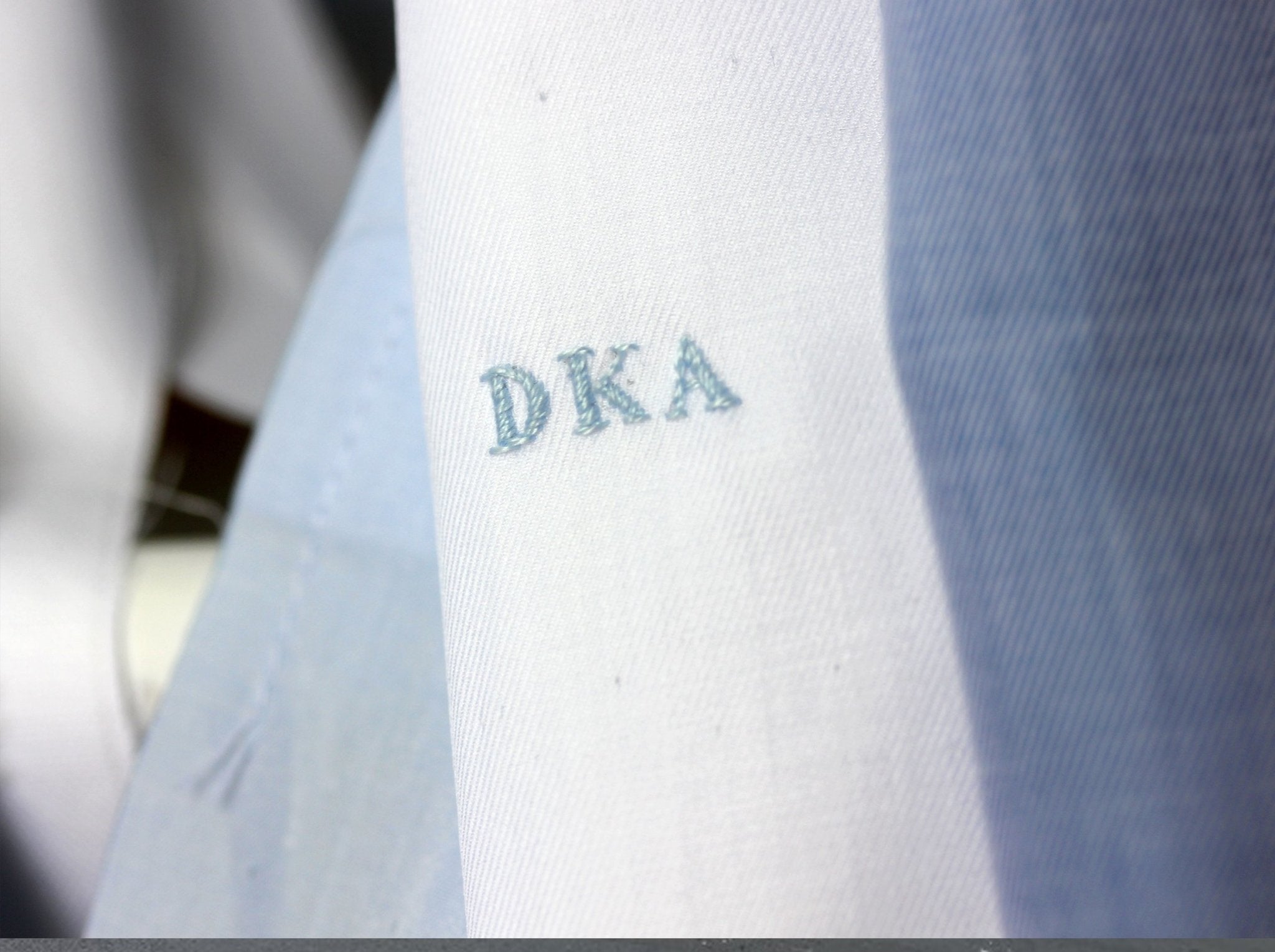
Frederick Heffer’s charming write up of his work experience at our Gloucester workrooms.
The hive of industry within Bearland House is hardly noticeable for those passing souls on the pavement outside. Some may stop and observe timidly the 18C. design but this is merely to flatter the house with their knowing appraisal of its timeless beauty. Indeed, such a handsome house is in little need of such fatigued admiration. Set back from the road, bands of gleaming white cut across the aged brick, a flag pole stands from the centre of the roof and newly painted railings shine in the foreground. Looking back now, after a week inside this house I find it’s subtle charms and distinguished presence noticed on my first sunny Gloucester morning entirely appropriate to the inner workings of the factory. The Emma Willis shirt making process seemed every bit as sincere, sophisticated and beautiful as the appearance of the factory leads one to believe- at least this is according to me, an untrustworthy source, eager to be enchanted by the romantic ordeal of putting a shirt together.
I had arrived in Gloucester on the 5th of August and on Monday walked through unfamiliar streets to arrive at the factory door. I pressed the buzzer and soon the great slab of stained wood was heaved inwards to reveal a smiling face. Soon bustled into the cutting room and then given a speedy whizz from room to room, up and down across the rolling carpets. Everything seemed wonderfully comprehensible, it was only wise and sensible to place the cutting room on the ground floor and the sowing ladies on the next. It is not that I understood what was going on but rather that I was pleasantly surprised to see the honest process being carried out by people rather than overbearing machines. I carried on upstairs next to meet Helen, chief embroiderer, working studiously over a floral cuff. After this brief tour I was down in the cutting room once more and occupied myself by getting in the way and watching intently. This was where I met Sam and Lizandra who initiated the shirt making process and myself into the factory. I was immediately reminded of Anderson’s film Phantom Thread seeing the industrially sized scissors cleanly slicing through the fabric, it was hugely satisfying to see the swathe of cotton from Switzerland being handled with such reverence and experience. Great scrolls of linen and cotton lay beneath the table awaiting their fate patiently. The remnants of these rolls were crammed into boxes surrounding the table, they were the unneeded material that was cut from the shirts. There was a plethora of texture and colour within these boxes and merely going through them was pleasurable in itself. I was drawn to the linen above all and picked out a square for a handkerchief. After this had been cut I scurried upstairs where Helen delivered an embroidery masterclass. I was astounded at the time and skill hand embroidery takes. This was to be the first, and heavily recurrent, misgiving of the whole process. One thinks a single shirt or boxer short is quick work but throughout the week I discovered the layers of attention and craft that go into any single Emma Willis shirt. This means it take a considerable time. Even my linen handkerchief with hand rolled hems took me near 3 hours, but of course this is adding in 10 minutes or so whenever rethreading the needle had to take place. It was a gratifying experience disfiguring these squares of white linen by branding them with my coarse initials as one becomes noticeably better through practise as with all things.
I was prodigiously excited when asked to cut a shirt intended for me. I chose a large Soho collar and ice blue cotton. The patterns were placed reverently onto the fabric and I drew carefully round them. Then I employed a device similar to a pizza cutter and, guided patiently by Sam through every stumble, managed to have cut a full shirt. It was upstairs next where I pranced from one lady to the next to watch each blade of cool cotton be tied to its partner. Once again I was amazed at the elegance that each shirt acquires under the steady hand of Kath, Steph or Georgina.
It was on the following day that the shirt was completed. Helen had graciously detailed my initials into the collar with a burnt umber thread that looked ravishing on the ice blue beneath. The shirt was then buttoned using a hand marking system and machine that violently cut and tied down the buttons. It was packing time next and gradually this wonderfully foreign shirt turned into something more familiar. Something that could be seen in a Jermyn Street window. After this I felt humbled and stunned, looking down onto the shirt it became something far greater than another, equally beautiful piece of clothing. This was because I saw In each thread the lady that put it there, I imagined the pencil marked button hole beneath the stitching now and was amazed. It was the embroidery above all that shook me however, it seemed to be personal on so many levels.
On Friday I spent the morning cutting boxers from the varying patterns and having received my own pair earlier on in the week I was extra careful to cut them well. It was a proud feeling to think that soon these pieces will be in the shop as boxers, a lucky person will cherish them for as long as they last. It is not only a fearless loyalty to Emma Willis shirts that manifested itself within me during that week but also a love of fabric and for the people that dance with it daily in Gloucester. It was a fabulous week and I cannot thank everyone enough for making it so memorable.
By Frederick Heffer


Leave a comment
This site is protected by hCaptcha and the hCaptcha Privacy Policy and Terms of Service apply.